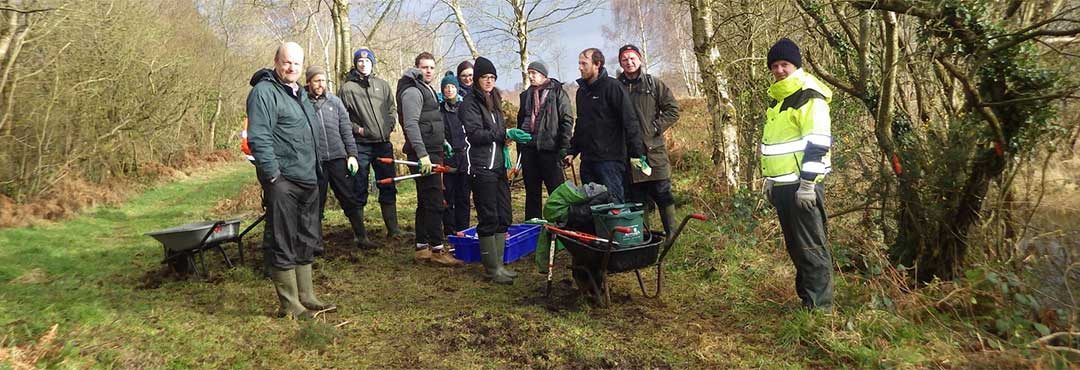This type of woodland grows on “base-rich” soils (formed from rocks rich in calcium – like limestone – and other ‘bases’). These soils are naturally fertile and productive. Their rich and varied ground flora occurs because of this soil fertility and because the canopy doesn’t cast a dense shade. Ash has a very ‘open’ leaf that lets light through and it is also one of the last trees to come into leaf in the spring, allowing other plants to flower before the ground becomes more shady.
Mixed ashwoods are generally distributed in the north and west of Britain and Ireland and is the main woodland type here in Northern Ireland, found mostly in County Antrim and County Fermanagh as well as Counties Down and Armagh.
To be defined as mixed ashwood a woodland must be greater than 0.5ha, have 20% or more canopy cover (or the potential for 20% canopy cover) and this canopy must consist of 50% or more site-native trees or shrubs (site-native means that the plants should grow naturally in the area).
Historical info about Mixed Ashwood
Mixed ashwoods are normally unmanaged but were often used as areas for grazing and shelter by livestock. The extent of this habitat over the whole UK is estimated to be about 67,500ha. About 3,430ha exist in Northern Ireland, of which only 130ha are in public management.
Species living in and around Mixed Ashwood
Mixed ashwoods consist of ash (Fraxinus excelsior), downy birch (Betula pubescens) and hazel (Corylus avellana). Rowan (Sorbus aucuparia) and goat willow (Salix caprea) are also found, as well as the non-native, invasive species sycamore (Acer pseudoplatanus) and beech (Fagus sylvatica).
Rare trees like whitebeams (Sorbus spp.) also grow in mixed ashwoods. Many other lichens, mosses, fungi, birds, mammals and invertebrates make their homes in this type of woodland. Molluscs are common in woodlands like this (based on base-rich soils), because they need a lot of calcium for their shells.
Wood anemone, bluebell, primrose and ramsons (wild garlic) carpet the floor in the spring and, for many, there is no better sight than a mixed ashwood in May!
Threats to Mixed Ashwood
The percentage of native trees and shrubs, the vegetation structure, special animals and absence of vegetation as well as invasive species, overgrazing and waste dumping are indicators used to show the condition of mixed ashwoods. Relatively little is known about the condition of mixed ashwoods in Northern Ireland.
Invasive species, like sycamore and beech, growing in the woodlands and replacing native trees are a major threat. They lead to a change in the original composition of the woodland.
Natural regeneration is prevented by grazing, browsing and bark stripping by animals. The habitat can be damaged by the dumping of waste and building rubble, and lost through deforestation for agricultural use and development.
A lack of woodland management and the accumulation of nutrients from agriculture, game bird rearing and spray drift could change the growing conditions for native trees in these habitats. Some plants are very specialised on particular soils and on the nutrients it contains, so each change has immediate effects on the composition. Air-pollution caused by cars and industry as well as climate warming may change the vegetation communities.
References
Department of Agriculture and Rural Development: Agri-Environment Scheme Management Plan. Mixed ash woodland. Antrim. woodlands http://eservices.ruralni.gov.uk/pdfs/cmd/6.4%20Mixed%20Ash%20WoodNo%20Grazing%20%20FD.pdf [last access: 4 September 2008]
Environment & Heritage Service (2005): Northern Ireland Habitat Action Plan, Mixed Ashwoods. Belfast. http://www.ni-environment.gov.uk/mixedashwoods_pdf.pdf [last access: 26 August 2008]
North East Biodiversity Forum: Upland Ash Woods. Newcastle. http://www.nebiodiversity.org.uk/biodiversity/habitats/woodland/uplandash/default.asp [last access: 4 September 2008]

